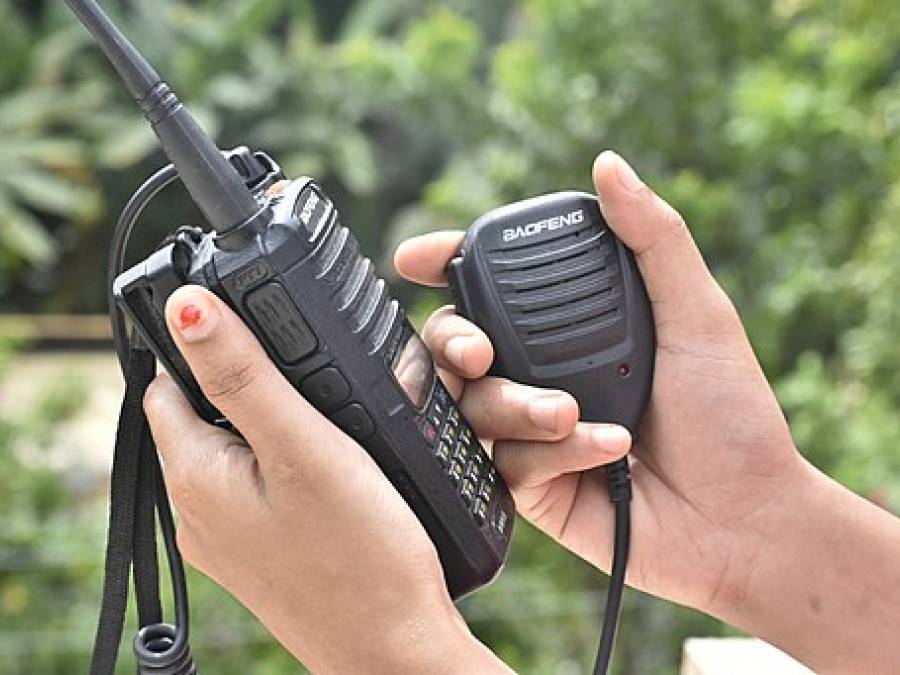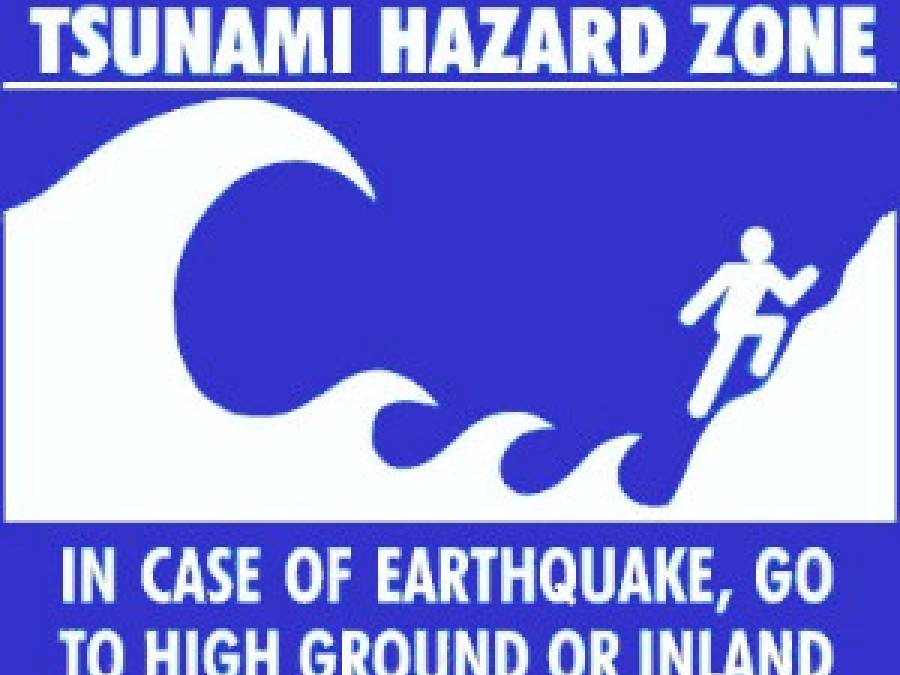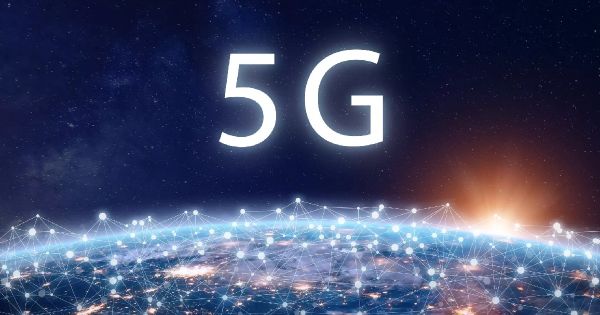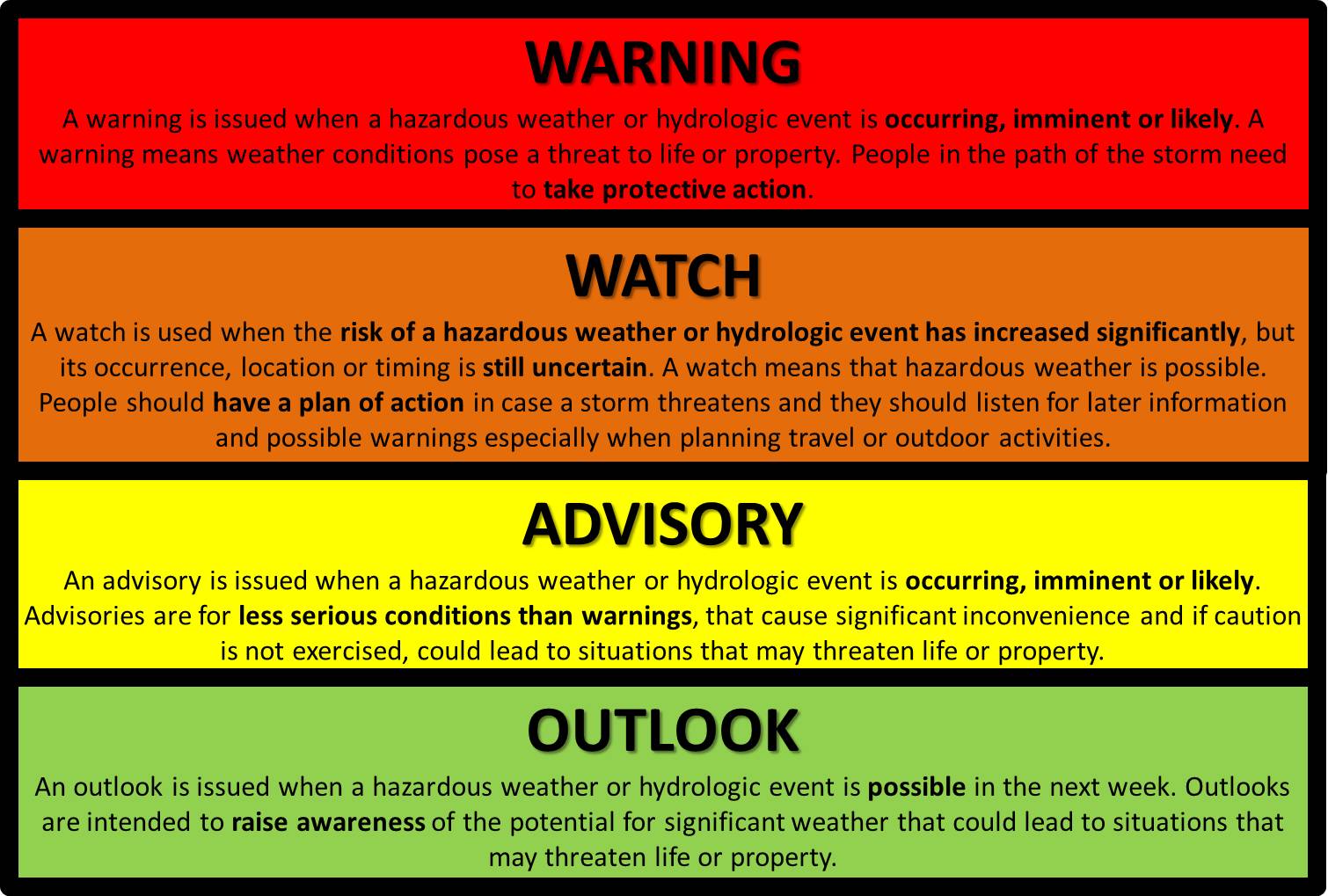On February 8, 1996, President Bill Clinton signed the 1996 Telecommunications Act into law, ushering in an era of unparalleled innovation and marketing of wireless communications that has fundamentally changed the way people interact with the world around them.
It was a landmark event, hailed by the telecom industry as a great step forward into the future.
Few people outside of the industry knew that Dr. Henry Lai and Narendra Singh at the University of Washington in Seattle had just published a study documenting a breakthrough discovery - single strand DNA breaks resulting from exposure to wireless radiation, the energy produced by virtually all wireless communications devices.1 DNA strand breaks can impair cell function, change cell structure and even lead to cell death. It's how we age, and how we develop cancer.

The finding was especially remarkable because biological damage from exposure to wireless radiation was something that electrical engineers and telecom companies had steadfastly claimed was impossible. Exposure could heat tissue if you got too close to an antenna, the engineers and physicists told legislators and regulators, but non-ionizing radiation was too weak to damage any biological systems.
Lai and Singh couldn't explain exactly how or why the DNA strands were damaged. Was it a direct effect of the radiation? Or did the radiation interfere with the body's normal DNA repair mechanisms? More research was needed.
We are all electric
Unless we happen to have a pacemaker, few of us appreciate the role that electricity plays in our bodies. Human beings evolved over millions of years in a natural electrical environment. The earth itself is a giant dipole magnet with poles north and south. There are constant oscillations emanating from the earth's core, and a natural static magnetic field that shifts slightly with the seasons. These magnetic fields play an important role in nature, dictating migration patterns and controlling our own circadian rhythms, among many other things.2
Like all animals on earth, our biological systems use an interplay of tiny electrical charges and chemical signals to control and direct precise responses to internal and external stimuli, thus influencing function and development. External influences, both chemical and electrical, can interfere with and adversely affect these biological processes. External influences include both natural and man-made electromagnetic fields (EMFs).
While most public health experts and scientists understand how environmental factors influence our cell biology, the idea that we can acquire a chronic illness from non-ionizing RF microwave radiation, even at low levels, has not yet taken hold in the medical community. Everyone now knows the hazards of exposure to cigarette smoke and lead, but how soon will we recognize the adverse health effects of the increasing and involuntary exposure to wireless radiation?
Dr. Robert O. Becker, surgeon and researcher who was twice nominated for the Nobel Prize, once observed, “I have no doubt in my mind that, at the present time, the greatest polluting element in the earth’s environment is the proliferation of electromagnetic fields.” 3
Early studies on wireless radiation and biological effects
The work of Lai and Singh at the University of Washington was not the first study to suggest biological effects from wireless radiation. Studies conducted by the U.S. military between 1940 and 1960, primarily concerned with personnel exposure to radar, had documented biological effects and impacts on behavior from exposure to wireless radiation.4 In 1973 the EPA hosted a meeting in collaboration with the American Public Health Association to discuss the growing concern over non-ionizing radiation and its potential impact on human health.
In the same year, at an international symposium on the “Biologic Effects and Health Hazards of Microwave Radiation” held in Warsaw, Poland, it was stated that “The reaction of the central nervous system to microwaves may serve as an early indicator of disturbances in regulatory functions of many systems.” 5
In 1977 the Journal of Microwave Power published an article citing new research demonstrating that exposure could affect nervous system function at power levels far below those that could heat tissue.6

The electromagnetic spectrum is roughly divided into ionizing and non-ionizing radiation. It is well established that ionizing radiation can cause direct harm by removing electrons from atoms with resultant DNA damage resulting in fixed mutations.7 It also produces “free radical” molecules (those with an imbalance of electrons) which can cause widespread injury to cell structures via oxidation of tissues and cell death. Non-ionizing radiation acts as an environmental stressor, with direct, toxic oxidative effects on biological processes unrelated to heat or to ionization.8 The effect of non-ionizing radiation is indirect, inducing biochemical changes in cellular structures and their membranes.9
The following year, scientists at the National Institute for Occupational Safety announced that exposure to wireless radiation had a biological effect on animals and humans, including damage to major organs, disruption of important biological processes, and the potential risk of cancer.10
In 1982 the Environmental Protection Agency's Office of Radiation Programs, which had been studying the non-thermal effects of wireless radiation for a decade, announced that it was developing a federal guidance to limit the public's exposure. Before the Agency was able to
develop and implement those guidelines, its authority to do so was rescinded and the office was defunded.
Research continued through the 1980s, much of it focusing on the further effects of thermal heating, particularly an increase in temperature in the tissue, which typically triggers physiological and behavioral thermal regulatory responses.
These responses involve neural activities both in the central and peripheral nervous systems.11 Other researchers looked at disturbances in neuroendocrine functions triggered by exposure to wireless radiation, which are related to stress, alteration in immunological responses, and tumor development.12
The industry responds
By 1996, concern about the public's reaction to the growing scientific evidence of potential harm led the telecom industry to craft and lobby for language in the Telecommunications Act that would pre-empt any local interference with the placement of wireless antennas in local communities on the basis of “environmental” factors, a phrase which the telecoms have argued in court, means anything to do with human health.13
Later that same year, the recommendations of the International Electrical and Electronics Engineers (IEEE) and a 1986 report from the National Council on Radiation Protection and Measurements (NCRP) regarding the limits to which humans could safely be exposed to wireless radiation were championed by the telecom industry. They were incorporated into the guidelines adopted by the Federal Communications Commission (FCC), where they remain today.14 The guidelines are based solely on the thermal capacity of wireless radiation, and use the Specific Absorption Rate (SAR) as the means to measure exposure.15
Late 1990s and 2000s: Scientific inquiry continues...
Scientific inquiry, meanwhile, continued its slow but methodical pace. Independent researchers around the world sought to understand the impact of this increased exposure on human health.
In 1997, Henry Lai and Narendra Singh published another study, this one showing both single and double-strand DNA breaks with low intensity RF microwave radiation.16 The following year they repeated the studies, but this time added a group of rats that were given melatonin, a potent free radical scavenger, before and after RF exposure. They found that melatonin seemed to block the adverse effects of the radiation.17

In 1998, Dr. Jerry Phillips at the Pettis VA Medical Center in Loma Linda confirmed DNA single-strand breaks exposed to RF microwave frequencies 813.5 MHz and 836.5 MHz frequencies at a low SAR (average 2.4 and 24 μW/g-1).18
In 2004, the Reflex Project, which included 12 research teams in seven European countries, confirmed the ability of low level RF microwave radiation to cause DNA breaks in exposed cells (SAR=0.3 and 2W/kg), as well as its ability to activate a stress response - the production of heat shock proteins. This stress response is a well-documented protective reaction of plant and animal cells to a variety of environmental threats, including high frequency RF radiation.19
Dr. Martin Blank and Reba Goodman at Columbia University demonstrated that the stress response was triggered at different RF frequency ranges with different SARs, rendering the SAR measurement questionable as a basis for the development of FCC safety guidelines. This work was confirmed by Dr. Dariusz Leszczynski and his team of researchers at the University of Helsinki in 2004.20
In 2007, researchers at the University of Kentucky were able to demonstrate how exposure to RF microwave radiation can damage or even destroy brain cells.21
In 2012, a study conducted at Yale University found that pregnant laboratory mice exposed to RF microwave radiation produced offspring that were more hyperactive and had poorer memory compared to the unexposed control group. Dr. Hugh Taylor, Chair of the Department of Obstetrics, Gynecology and Reproductive Sciences at Yale University School of Medicine, examined the brain structure of the exposed animals and discovered significant neuron damage in the prefrontal cortex - the part of the brain that controls behavior – with no such damage in the control group.22
Other researchers published similar studies on wireless radiation's impact on brain development, showing that laboratory animals prenatally exposed to the radiation developed impaired learning and also showed damage to those parts of the brain involved in memory and learning.23 Prenatally exposed rat pups also had damaged spinal cords.24
The World Health Organization (WHO)/International Agency for Research on Cancer classified RF-EMF (radiofrequency electromagnetic fields) as a Class 2B (Possible Human Carcinogen) in 2011 based on credible evidence that linked long term wireless exposure to brain cancer.25

More recently, a ten-year, $30-million-dollar study conducted by the National Toxicology Program of the U.S. National Institutes of Health sought to determine if exposure to wireless radiation from cell phones increased the risk of cancer.
The conclusion by a 13-member independent panel of experts in 2018 was that there was “clear evidence” of an increased cancer risk, the highest level of scientific certainty.26 Dr. Ronald Melnick, principal designer of the study, stated, “We should no longer assume that any current or future wireless technology – including 5G – is safe without adequate testing.” 27
A 2018 study by the Ramazzini Institute in Italy, funded in part by the U.S. government, found that lab animals exposed to wireless radiation from distant cell towers had a greater chance of developing heart tumors than those which were not exposed. This study was the first large-scale study to show clear evidence of cancer risk from far-field exposures. 28
Other recent studies demonstrate that wireless radiation has broad effects on the body, impacting sperm, ovaries, liver, kidneys, the immune system, melatonin production, the blood brain barrier, and nerve cell viability and function.29 Prenatal developmental effects are especially worrisome as they can be heritable. The damage to cells is cumulative and increases with longer exposure. Because of long latency periods between exposure and diseases such as brain cancer, the full negative effects of wireless radiation exposure on public health may not be realized for many years.30
Over time, the proliferation of wireless devices and computers has not only revealed a number of significant health impacts, but also an increasingly common and relatively new syndrome called electro-sensitivity or microwave sickness. A growing number of people in all walks of life are reporting a range of symptoms, including headaches, insomnia, mental confusion, heart palpitations and fatigue in the presence of wireless devices and when in close proximity to cell towers. These are classic signs of microwave sickness described in reports by NASA,31 the U.S. Department of Defense32 and the EPA.33
The United States Access Board recognizes “that multiple chemical sensitivities and electromagnetic sensitivities may be considered disabilities under the Americans with Disabilities Act (ADA) if they so severely impair the neurological, respiratory or other functions of an individual that it substantially limits one or more of the individual’s major life activities.” 34
Over a decade ago, firefighters in California reported the development of symptoms of electro-sensitivity after wireless transmitters were installed on fire stations. They noted severe headaches, sleep deprivation, depression, lack of focus, lack of impulse control, slowed reaction time, tremors and vertigo. The International Association of Firefighters (IAF) commissioned a study to further investigate the issue. The study confirmed adverse effects on the firefighters, and the IAF authored a policy statement asking for exemptions from placement of wireless antennas on their facilities so they could maintain “optimal cognitive and physical capacity at all times.” 35
Research is advancing with evidence that electro-sensitivity may be related to multiple chemical sensitivity (MCS) as a toxic exposure. Common pathological mechanisms are suggested as illness appears related to oxidative and inflammatory processes. Biomarkers for electro-sensitivity have been proposed to help better diagnose the condition. 36
Biological harm to living organisms
Science is revealing harm to all living organisms, including trees,37 plants, animals, insects and bacteria, from radiofrequency EMR exposure with levels at or below current U.S. safety guidelines.38
In 2013, a group from the Institute of Environmental Sciences in the Netherlands published a thorough review of the ecological effects of RF-EMF, based on 113 published, peer-reviewed studies. They found that wireless radiation had a significant effect on birds, insects, other vertebrates, and multiple organisms and plants in 70% of the studies.39
Industry pushback

Not surprisingly, the wireless industry has pushed back hard against the ever-growing body of independent, peer-reviewed research, commissioning their own studies and questioning the findings and competence of independent scientists. Like the tobacco industry before it, the wireless industry has sought to create sufficient doubt and “scientific controversy” to dissuade federal regulators from reigning in the broad expansion of wireless networks.
Researchers like Henry Lai became concerned about the manipulation of science for profit, and in 2006 he performed an analysis of the available studies on RF microwave radiation between 1990 and 2006, including the source of funding for the studies. He found that 50% of the 326 studies showed a biological effect from exposure to RF microwave radiation and 50% showed no effect. But when he separated the studies based on funding, he found that only 30% of the industry-funded studies showed an effect, while 70% of the independently funded studies showed an effect.43
In 2012, the U.S. Government Accountability Office issued a report recommending that the FCC update its human exposure guidelines for RF microwave radiation. The following year, the agency commenced an official review of its exposure policies.
Thousands of comments were submitted, including hundreds from independent experts from around the world. The agency closed the inquiry in late 2013, taking the comments under advisement. No changes were ever made to the guidelines, and no acknowledgement of the review was announced.
Recently, members of Congress have demanded to know the results of the inquiry, and why the guidelines haven't been changed. FCC Chairman Ajit Pai has responded with a recommendation that the FCC formally adopt a policy to maintain its current exposure standards, which, for cell towers, antennas and other wireless infrastructure, are among the least protective in the world.
Conclusion
The notion that exposure to radio-frequency microwave radiation is not harmful to humans, which has been the underlying principle of all federal legislation and regulations regarding wireless technologies for more than twenty years, has now been proven false. The substantial body of credible science documenting harm from exposure to various levels and frequencies of wireless radiation mandate a precautionary approach to the widespread deplo
yment of wireless technologies to reduce potential harm to the public and the environment.44
While some studies on wireless radiation exposure found no effects, hundreds of studies did find biological effects occurring at levels at or below current U.S. standards. This has prompted more than 240 scientists with published peer-reviewed research on wireless radiation and health to sign an appeal to the World Health Organization and the United Nations, calling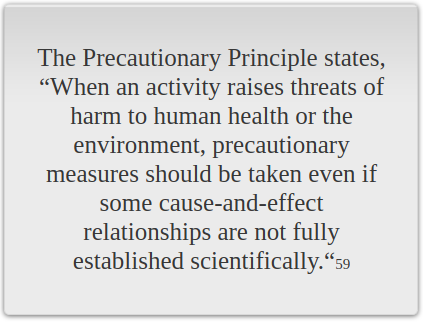 for precautionary health warnings and stronger regulation of wireless radiation.45
for precautionary health warnings and stronger regulation of wireless radiation.45
This page was compiled by Grassroots Environmental Education, a science-based non-profit organization. The text of this page is available in booklet form from the 5GCrisis store.
Large portions of this document were adapted from the Summary Statement of Physicians for SafeTechnology: Wireless Technology and Public Health, and we are grateful for their contributions and expertise in preparing this manuscript. Read the original here.
Sources
1 Lai and Singh, “Single-and Double-strand DNA breaks in rat brain cells after acute exposure to radiofrequency electromagnetic radiation.” The International Journal of Radiation Biology (1996; 69-4:513-521) and Bioelectromagnetics (1996; 16:207-210) (1995/1996).
2 B. Blake Levitt, editor, “Cell Towers - Wireless Convenience, or Environmental Hazard?” Proceedings of the Cell Towers Forum, State of the Science / State of the Law, New Century Publishing (2000).
3 Becker, R. O., & Selden, G., “The Body Electric: Electromagnetism and the Foundation of Life.” William Morrow & Company. Inc., New York. (1985).
4 Cook et al, “Early Research on the biological effects of microwave radiation,” 1940-1960, Annals of Science 37, p.323-351 (1980).
5 Czerski, P. “Experimental models for the evaluation of microwave biological effects.” Proceedings of the IEEE, Volume 63 Issue 11 (1975).
6 Stuchly, M. “Potentially hazardous microwave radiation—a review.” Journal of Microwave Power Dec; 12(4):369-81 (1977).
7 Martin Pall. J., “Electromagnetic fields act via activation of voltage-gated calcium channels to produce beneficial or adverse effects.” Cell. Mol. Med. Vol 17, No 8, pp. 958-965. (2013).
8 Kim M, Bae M, Na H, Yang M, “Environmental toxicants–induced epigenetic alterations and their reversers.” Journal of Environ Sci Health C Environ Carcinog Ecotoxicol Rev. 2012;30(4):323-67. (2012).
9 Desouky, et al, “Targeted and non-targeted effects of ionizing radiation,” Journal of Radiation Research and Applied Sciences, Vol. 8 No. 2 Pages 247-254 (2015).
10 M. J. Dwyer and D. B. Leeper, “Carcinogenic Properties of Non-Ionizing Radiation; Volume H - Microwave and Radiofrequency Radiation”, National Institute for Occupational Safety Technical Report, published by The U. S. Department of Health, Education & Welfare, NIOSH Contract Number 210-76-0145, Cincinnati, (1978).
11 Adair, E.R. “ Thermoregulatory consequences of long-term microwave exposure at controlled ambient temperatures,” Bioelectromagnetics, 1984; Stern, S. “Behavioral effects of microwaves.” Neurobehavioral Toxicology., 2, 49. (1980).
12 Michaelson S.M., Lin J.C. Neuroendocrine Effects. In: Biological Effects and Health Implications of Radiofrequency Radiation. Springer, Boston, MA (1987); Lu, S.-T., W. G. Lotz, and S. M. Michaelson “Advances in microwave-induced neuroendocrine effects: The concept of stress.” Proc. IEEE 68: 73. (1980).
13 Section 704(a) of the 1996 Act expressly preempts state and local government regulation of the placement, construction, and modification of personal wireless service facilities on the basis of the environmental effects of radiofrequency emissions to the extent that such facilities comply with the FCC's regulations concerning such emissions. 47 U.S.C. §332(c)(7)(B)(iv).
14 “The SAR limits for general population/uncontrolled exposure are 0.08 W/kg, as averaged over the whole body, and a peak spatial-average SAR of 1.6 W/kg, averaged over any 1 gram of tissue (defined as a tissue volume in the shape of a cube). Exceptions are the parts of the human body treated as extremities, such as hands, wrists, feet, ankles, and pinnae, where the peak spatial-average SAR limit is 4 W/kg, averaged over any 10 grams of tissue (defined as a tissue volume in the shape of a cube). Exposure may be averaged over a time period not to exceed 30 minutes to determine compliance with general population/uncontrolled SAR limits.” 47 CFR § 1.1310 - Radiofrequency radiation exposure limits., FCC Publication, Retrieved from Cornell Law School. (2013).
15 B. Blake Levitt, editor, “Cell Towers - Wireless Convenience, or Environmental Hazard?” Proceedings of the Cell Towers Forum, State of the Science / State of the Law, New Century Publishing (2000).
16 Lai and Singh, (1996).
17 Lai, H., and Narendra P. S., “Melatonin and a spin-trap compound block radiofrequency electromagnetic radiation-induced DNA strand breaks in rat brain cells.” Bioelectromagnetics: Journal of the Bioelectromagnetics Society, The Society for Physical Regulation in Biology and Medicine, The European Bioelectromagnetics Association 18.6: 446-454 (1997).
18 Phillips J, et al, “DNA damage in molt-4 lymphoblastoid cells exposed to cellular telephone radiofrequency fields in vitro.” Bioelectrochemistry and Bioenergetics 45:103-110.(1998).
19 Slesin, Ed. “REFLEX Report Highlights RF-Induced DNA Breaks.” Microwave News, December 2004, accessed at: https://microwavenews.com/news-center/reflex-report-highlights-rf-induced-dna-breaks
20 Blank, M., and Goodman R., “Comment: a biological guide for electromagnetic safety: the stress response.” Bioelectromagnetics: Journal of the Bioelectromagnetics Society, The Society for Physical Regulation in Biology and Medicine, The European Bioelectromagnetics Association 25.8: 642-646 (2004).
21 Zhao, et al, “Exposure to Cell Phone Radiation Up-Regulates Apoptosis Genes in Primary Cultures of Neurons and Astrocytes.” Science Digest 412: 34-38 (2007).
22 Adad, et al, “Fetal Radiofrequency Radiation Exposure from 800-1900 MHz-rated Cellular Telephones Affects Neurodevelopment and Behavior in Mice.” Science Reports 2:312 (2012).
23 Inkinci, et al, “The Effects of Prenatal Exposure to a 900 MHz Electromagnetic Field on Hippocampus Morphology and Learning Behavior in Rat Pups.” NeuroQuantology, V11 No. 24. (2013).
24 Odaci, et al, “The Effects of 900 MHz Electromagnetic Field Applied in the Prenatal Period on Spinal Cord Morphology and Motor Behavior in Female Rat Pups.” NeuroQuantology, V11 No. 4: 573-581 (2013).
25 International Agency for Research on Cancer (IARC), “IARC classifies radiofrequency electromagnetic fields as possibly carcinogenic to humans,” press release #208, May, 2011. Accessed at https://www.iarc.fr/wp-content/uploads/2018/07/pr208_E.pdf
26 Actions from Peer Review of the Draft NTP Technical Reports on Cell Phone Radiofrequency Radiation, https://ntp.niehs.nih.gov/ntp/about_ntp/trpanel/2018/march/actions20180328_508.pdf (2018).
27 Melnick, R., “There's a clear cell phone-cancer link, but FDA is downplaying it.” The Hill. https://thehill.com/opinion/healthcare/416515-theres-a-clear-cell-phone-cancer-link-but-fd a-is-downplaying-it (2018).
28 Falconi, et al, “Report of final results regarding brain and heart tumors in Sprague-Dawley rats exposed from prenatal life until natural death to mobile phone radiofrequency field representative of a 1.8 GHz GSM base station environmental emission.” Environmental Research Volume 165, August 2018, Pages 496-503
29 BioInitiative Working Group. Sage, C. and Carpenter D., Editors. BioInitiative Report: A Rationale for a Biologically-based Public Exposure Standard for Electromagnetic Radiation, www.bioinitiative.org, (2012).
30 Pearce, Mark S., et al., “Radiation exposure from CT scans in childhood and subsequent risk of leukaemia and brain tumours: a retrospective cohort study.” The Lancet 380.9840: 499-505 (2012).
31 Raines, J., “Electromagnetic Field Interactions with the Human Body: Observed Effects and Theories.” Nasa Report (1981).
32 “Defense Intelligence Agency: Biological Effects of Electromagnetic Radiation (Radio waves and Microwaves) in Eurasian Communist Countries.” Prepared by Army Medical Intelligence and the office of the Surgeon General. (1975).
33 “Efforts By The Environmental Protection Agency To Protect The Public From Environmental Nonionizing Radiation Exposures.” United States General Accounting Office. CED-78-79, (1978).; “US EPA Office of Air and Radiation and Office of Research and Development: Summary of Results of the April 26-27,1993 Radiofrequency Radiation conference.” United States, EPA. (1995).
34 Americans with Disabilities, https://www.access-board.gov/research/completed-research/ indoor-environmental-quality/
35 “International Association of Firefighters: Division of Occupational Health, Safety and Medicine. Position on the Health Effects from Radiofrequency/Microwave (RF/MW) Radiation in Fire Department Facilities.” (2011).
36 Belpomme, D., Campagnac, C., & Irigaray, P., “Reliable disease biomarkers characterizing and identifying electrohypersensitivity and multiple chemical sensitivity as two etiopathogenic aspects of a unique pathological disorder.” Reviews on environmental health, 30(4), 251-271. (2015).; Sage, C. “The implications of non-linear biological oscillations on human electrophysiology for electrohypersensitivity (EHS) and multiple chemical sensitivity (MCS).” Reviews on Environmental Health, 30(4), 293-303. (2015).
37 Waldmann-Selsam, C., Balmori-de la Puente, A., Breunig, H., & Balmori, A. “Radiofrequency radiation injures trees around mobile phone base stations.” Science of the Total Environment, 572, 554-569. (2016).
38 “BioInitiative Working Group.” Sage, C. and Carpenter D., Editors. BioInitiative Report: A Rationale for a Biologically-based Public Exposure Standard for Electromagnetic Radiation, www.bioinitiative.org, (2012).; Sivani, S., & Sudarsanam, D., “Impacts of radiofrequency electromagnetic field (RF-EMF) from cell phone towers and wireless devices on biosystem and ecosystem-a review.” Biology and Medicine, 4(4), 202. (2012); Alfonso Balmori Martínez, “The Effects of Microwave Radiation on Wildlife: Preliminary Results.” http://www.emrpolicy.org/litigation/case_law/beebe_hill/balmori_wildlife_study.pdf (2003).
39 Cucurachi, S., Tamis, W. L., Vijver, M. G., Peijnenburg, W. J., Bolte, J. F., & de Snoo, G. R. “A review of the ecological effects of radiofrequency electromagnetic fields” (RF-EMF). Environment International, 51, 116-140. (2013).
40 “Report on possible impacts of communication towers on wildlife including birds and bees.” Ministry of Environment and Forests. (2011).
41 Sivani, S., & Sudarsanam, D., “Impacts of radiofrequency electromagnetic field (RF-EMF) from cell phone towers and wireless devices on biosystem and ecosystem-a review.” Biology and Medicine, 4(4), 202. (2012).
42 Schwarze, S. et al, “Weak broadband electromagnetic fields are more disruptive to magnetic compass orientation in a night-migratory songbird (Erithacus rubecula) than strong narrow-band fields.” Frontiers in Behavioral Neuroscience, 10, 55. (2016).; Engels, S. et al, “Anthropogenic electromagnetic noise disrupts magnetic compass orientation in a migratory bird.” Nature, 509(7500), 353. (2014).; Lázaro, A. et al, “Electromagnetic radiation of mobile telecommunication antennas affects the abundance and composition of wild pollinators.” Journal of insect conservation, 20(2), 315-324. (2016).; Dalio, J. S., “Effect of electromagnetic radiations on Apis mellifera.” J. Res. Agric. Animal Sci, 2. (2015).; Darney, K. et al, “Effect of high-frequency radiations on survival of the honeybee (Apis mellifera L.).” Apidologie, 47(5), 703-710. (2016).; Cammaerts, M. C., “Is Electromagnetism one of the causes of the CCD? A work plan for testing this hypothesis.” Journal of Behavior, 2(1), 1006. (2017).
43 “UW Scientist Henry Lai Makes Waves in the Cell Phone Industry,” Seattle Times, (2011).
44 “BioInitiative Working Group.” Sage, C. and Carpenter D., Editors. BioInitiative Report: A Rationale for a Biologically-based Public Exposure Standard for Electromagnetic Radiation, www.bioinitiative.org, (2012).; Levitt, B. B., & Lai, H., “Biological effects from exposure to electromagnetic radiation emitted by cell tower base stations and other antenna arrays.” Environmental Reviews, 18(NA), 369-395. (2010).
45 EMF Scientists Appeal to the United Nations and the WHO for more protective EMF guidelines. EMFScientist.org. https://emfscientist.org/images/docs/International_EMF_Scientist-Appeal.pdf (2015).
46 Kostoff, R. N., and GY Lau, C., “Modified health effects of non-ionizing electromagnetic radiation combined with other agents reported in the biomedical literature.” Microwave effects on DNA and proteins. Springer, Cham, 97-157. (2017).; Pall, M. L., “Electromagnetic fields act via activation of voltage-gated calcium channels to produce beneficial or adverse effects.” Journal of Cellular and Molecular Medicine, 17.8: 958-965. (2013).
47 The Precautionary Principle. (n.d.). Retrieved from http://www.precautionaryprinciple.eu/






